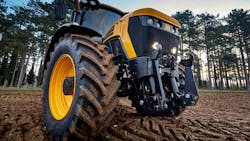Cutting Down on Soil Compaction
“Soil becomes compressed or compacted through agricultural practices, cultivation and wheeled traffic,” says Dave Paulk, manager of field technical services, BKT USA Inc.
“It restricts water and air distribution in the soil. This can result in a lack of water and nutrient distribution and can cause slow seem emergence and diminished crop yield.
“For soil to be healthy, soil particles and pore space should be close to 50/50. When pore spacing is decreased, air and moisture are driven out of the soil and soil density increases.
“Deep soil compaction is of greater concern than near surface compaction,” he explains. “Soil compaction can be managed and minimized. Prevention of compaction is better than trying to repair it. Once compacted, it can take years to undo the damage.
“Research has shown that 70% to 80% of compaction is done in the first pass. Compaction can vary depending on the soil type, soil moisture, tire size, air pressure levels and total loads.
“With conventional tillage, research has estimated that 90% of a field can be tracked on during the year. Some of this area can receive as many as four or five passes a year. By cutting down on traffic in a field, compaction can be managed and the subsoil allowed to regenerate.
“If possible, farming should not be done on wet soil,” says Paulk. “If the soil is near saturation, the load can be greater than the soil’s ability to support it – causing deep ruts and excessive wheel slippage. Heavy fertilizer spreaders, combines, grain carts and trucks can be destructive when run on overly wet soil.
“It is much better to work on dry or moist soil. Managing traffic patterns and using only portions of the field for traffic can help manage compaction by not driving on it.
Paulk notes that a penetrometer can measure the force needed to insert a cone into the soil. “This is inserted by hand at a steady speed to determine the force required to penetrate the soil at a certain depth. The measurement is generally given in megapascals (MPa). Typically, root growth becomes affected when resistance exceeds 1.5 MPa. Root growth is severely restricted at 2.5 MPa or more.
“Deep soil compaction is excessive compaction below the normal tillage depth. Generally, this starts at about eight inches, depending on the type of soil.
“Some other ways to reduce soil compaction include using only enough ballast to reduce slippage; running correct area pressures for the loads and reducing axle weight, as axle
loads of greater than five tons increase subsoil compaction; and using radial tires instead of bias-ply tires,” says Paulk.
“Radials can run at a lower air pressure, which is directly correlated to soil compaction. The more air needed, the more compaction on the soil.”
